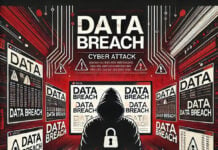One of the most effective tools in our cybersecurity arsenal at Exabeam is the regular deployment of phishing simulations. These exercises are not just routine checks but essential components of our defense strategy, especially during significant organizational change and public announcements.
Phishing attacks are among the most common and effective methods cyberattackers use to infiltrate organizations. These malicious actors are constantly on the lookout for any opportunity to exploit vulnerabilities and are particularly adept at capitalizing on periods of heightened emotions and uncertainty. Public announcements, such as new product launches, leadership changes, or significant partnerships, can create an environment ripe for exploitation. During these times, employees may be more distracted and anxious, making them prime targets for sophisticated phishing attempts.
It’s time to wake up. Attackers have no regard for internal company dynamics or the stress levels within your teams. Their sole focus is on finding and exploiting any weakness to disrupt your business. They will prey on any situation, no matter how sensitive or challenging it may be for the individuals involved. They do not care how anyone feels. This ruthless opportunism is precisely why phishing simulations are so important — they prepare us for the worst-case scenarios by exposing potential vulnerabilities before real attackers can.
The Benefits of Phishing Simulations
Phishing simulations provide invaluable insights into the effectiveness of security training programs. By simulating real-world attacks, organizations can identify gaps in knowledge and behavior that might otherwise go unnoticed. This allows security teams to tailor training efforts to address specific weaknesses, ensuring that employees are better equipped to recognize and respond to actual threats. The data collected from these simulations can also inform broader security policies and strategies, helping organizations stay ahead of emerging threats.
Moreover, these simulations foster a culture of continuous learning and improvement. When employees understand that phishing simulations are not punitive but educational, they are more likely to engage with the training material and take security seriously. This proactive mindset is crucial in creating an environment where everyone feels responsible for the organization’s cybersecurity, not just the IT or security teams.
While one must strive to be mindful of the stress and concerns of employees, it is essential to balance this with the necessity of maintaining robust security measures. The goal should be not to add to the anxiety but to ensure that every member of the organization is better prepared to recognize and respond to potential threats.
It is critical that security vendors not only talk the talk but walk the walk, and are committed to continuous improvement in their security posture. This means not only addressing the technical aspects of cybersecurity but also fostering a culture of awareness and vigilance among employees. By understanding the importance of these simulations and the nature of the threats we face, we can collectively strengthen our defenses and protect our organization from harm.
The stakes are too high to allow complacency. As cyberthreats continue to evolve, so must our defenses. Phishing simulations are a critical tool in our ongoing battle against cyber attackers, helping us ensure that we are always prepared for whatever challenges may come our way. By embracing these exercises and the lessons they provide, we can build a more resilient and secure organization, capable of withstanding even the most determined adversaries.



















